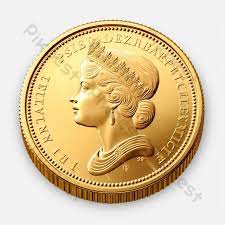Venice, like Aphrodite emerging from the foam of the sea, is a beautiful and amazing city. Venice includes one hundred and eighteen islands, the unification of which was a lot of work. Until the 13th century, the city was called Veneto or Venetia, after the names of the tribes that inhabited this territory. Since the 9th century, Venice, formally still under the rule of Byzantium.
begins an independent path. Giustiniano Partechipazio, the eleventh Doge of Venice, orders the construction of the church of St. Mark, and the relics were transferred to it. “Pious thefts” for the glory of the Venetian churches, as Pietro Cale describes it. The status of the city changed and gained a new patron. Trade is the main source of income and development of the republic, and trade exchange is carried out with the help of money.
The first coins of Venice were silver denarii, which appeared due to the reform of Charlemagne. The obverse featured a cross in the center and a circular inscription “CARLVS REX FRANCORVM”. On the reverse was the monogram of the monarch, and in a circle – an indication of the city in which the coin was minted. The weight of the coin was 1.6996 grams.
The coin, which can be identified by the inscription “VENECIAS”, is dated 819-822, during the reign of Louis I the Pious, who inherited the imperial title from his father Charlemagne.
By the XI century, Venice becomes an independent and influential state. The monetary reform of Enrico Dandaloo (1192-1205) led to the emergence of the first system in Europe, consisting of several monetary denominations with a certain exchange rate.
The Venetian Mattapan (a high-grade silver coin minted with only 985 silver) has become quite widespread through trade. The weight of the coin is 2.2 grams. The name “Mattapan” comes from the Arabic “mautaban”, which translates as “sitting Christ”. The central image on the coin was the image of Christ on the heavenly throne, taken from Byzantine coins.
On the front side of the coin, the Doge receives a banner from the hands of the Apostle Mark, which symbolizes his power over the republic, and on the reverse side, Jesus Christ sitting on the throne is minted.
appeared under Doge Enrico Dandaloo. Their introduction into the regular money circulation of quarterly made a revolution in the financial system. Quartararo – the first coins (after the collapse of the Roman Empire), whose face value is higher than the metal from which they were produced. They consisted of only 0.003 of silver, and therefore they are referred to as copper.
On the obverse of the coin, you can distinguish the letters “V”, “E”, “N”, “C” (Venezia civitas – the state of Venice).
In 1284, the 48th Doge Giovanni Dandaloo issued a gold coin, on the obverse of which Jesus Christ in a halo, and on the reverse – a kneeling Doge, receiving a banner from the hands of the Apostle Mark. The inscription around the circle: “Sit tibia Christi dates.
qualm too Regis site ducats” (“This duchy, which you rule, is dedicated to you, Christ”) gave the coin the name “ducat”. Subsequently, when similar coins began to be imitated and minted in a number of European countries, Venetian gold began to be called sequin. The weight of the coin is 3.494-3.559 grams and the quality has not changed for five centuries.
The most famous traveler and navigator of that time, Marco Polo, set off for China in the middle of the 12th century, opening up new markets and new trade routes for the Venetian Republic. Every self-respecting merchant considers it his duty to open a representative office in Venice. The city becomes not only a center of trade, but also crafts. They said about her – “the jewelry box of the whole world.”
In 1459, the Senate of Venice makes a loud and proud statement: “Our gold coin is highly valued and has a reliable reputation throughout the world, it is above all the gold coins of other peoples!”
Long before this announcement, in 1332, Doge Francesco Dandaloo was the first European monarch to mint the sold. From the name of this coin came the word – soldier, which meant the negligible cost of a mercenary warrior and his life. Coin characteristics: diameter – 11 mm, fineness of the precious metal – 670th and weight – 0.957 grams.
Gazette is the name given by the people to the Venetian coins of 2 solid, which appeared in 1539. The Venetian newspaper “La gazettal dele Novita” was sold for 2 solid or 1 newspaper. The denomination of the coin gave the name not only to the Venetian, but also to all newspapers published in the future. Gazettes were minted until the middle of the 17th century. They were billon coins.
At the beginning of the 15th century, the Spanish traveler Pero Taura described Venice as “the axis of Europe” in this way. The Venetian Republic has ruled over its subject territories without changing the institution of power for almost five centuries.
It was the time of the highest prosperity of the Venetian Republic, a small state with an imperial beginning. Venice attracted both Western and Eastern merchants and travelers.
Venice became the leader among European states in issuing colonial money. Tornzesello XIV-XVI centuries. minted mainly for the colonies in Greece.





